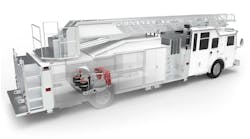Partially due to the pressure of new truck efficiency pressures and the shifting economics of a worldwide supply chain, four issues arise as potential truck technology definers over the next seven years:
- OEM global component integration - The European design influence on Class 7 and 8 tractors has been joined by the designs of Asian OEMs in Class 5 and 6, creating a definite trend toward proprietary components in every system - from the engine and drivetrain to headlight modules. This will create a shift in preference between independent repair shops and franchised dealers.
- Supplier system partnership - As a by-product of OEM global component integration, suppliers will be forced into alliances to produce synchronized system solutions for various major vehicle functions, often taking into account the geographic and political preferences of the OEM assembler. Thus, mated components should become more prevalent as fewer specification choices are offered to fleet operators.
- OEM vocational standardization - With an eye toward world truck solutions, as well as increasing recognition of the enhanced economics of building "vanilla" trucks, more OEMs will adopt the attitude that their vocational engineering is far superior to end-user specification. This theory has been tried periodically by domestic OEMs, but never stuck. However, with increased overseas ownership of truck and component suppliers, this unified or universal vocational spec idea may have legs this time.
- Severe technician/driver shortages - Enhanced driver ergonomics will be one of the primary design criteria for the next few years. The cyclical downturn in the number of trained drivers, aggravated by inconsistent hours-of-service (HOS) regulations and CSA (Compliance, Safety, Accountability) enforcement will make the drivers' personal workspace a design focus. Likewise, limited technician availability will drive designers away from complicated diagnostic and repair to easily executed remove and replace maintenance solutions.



